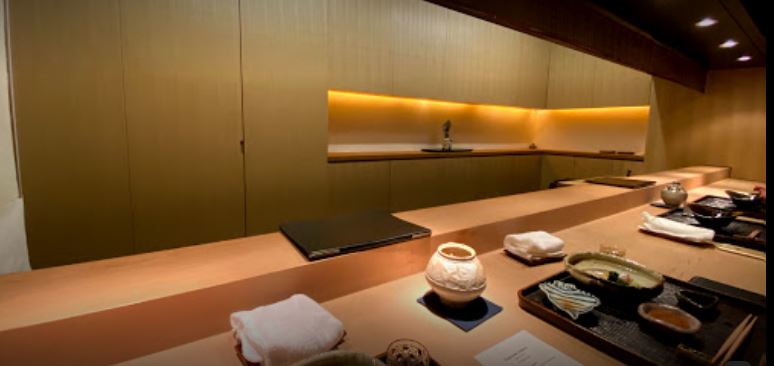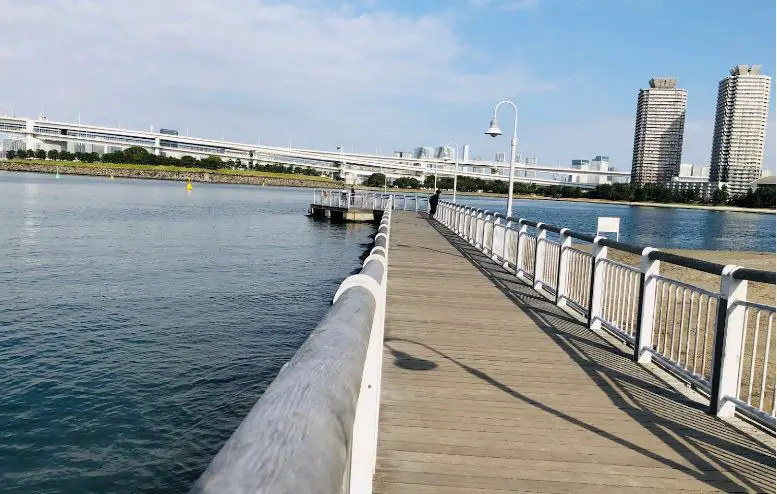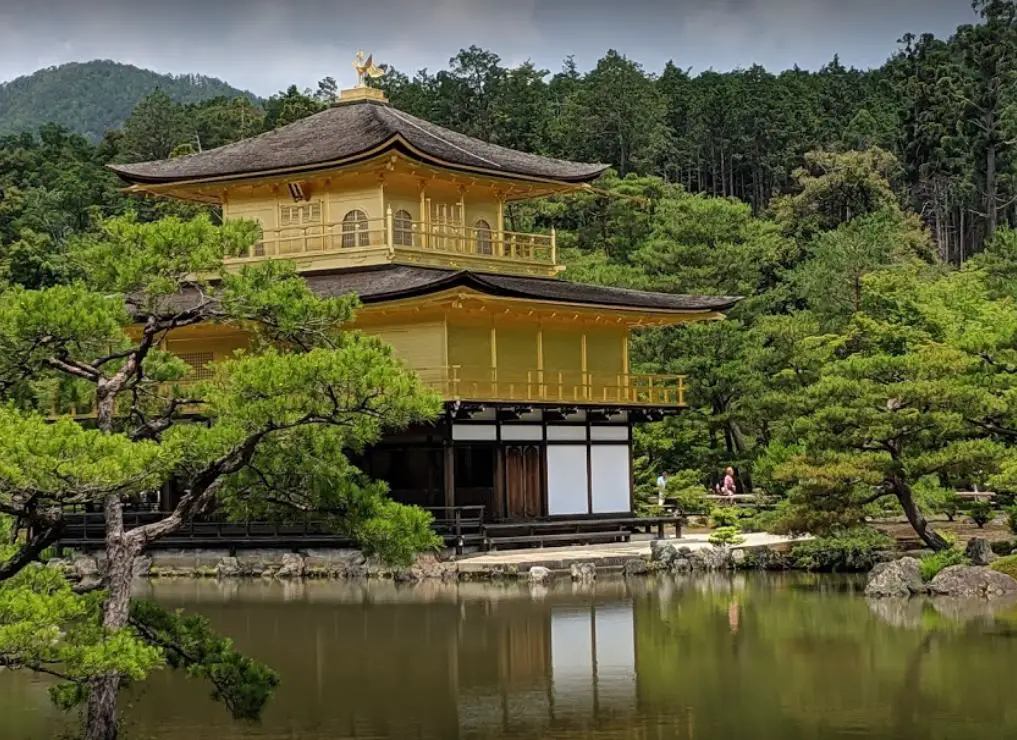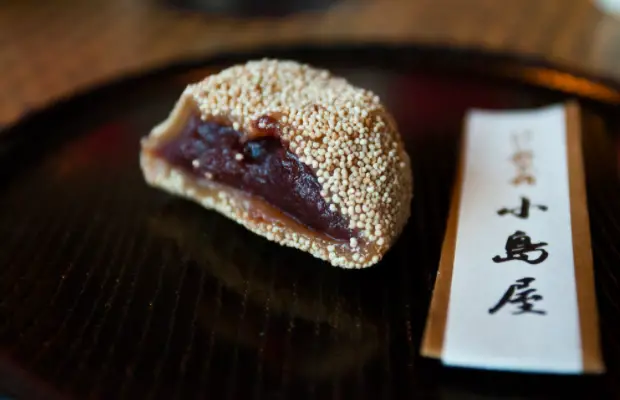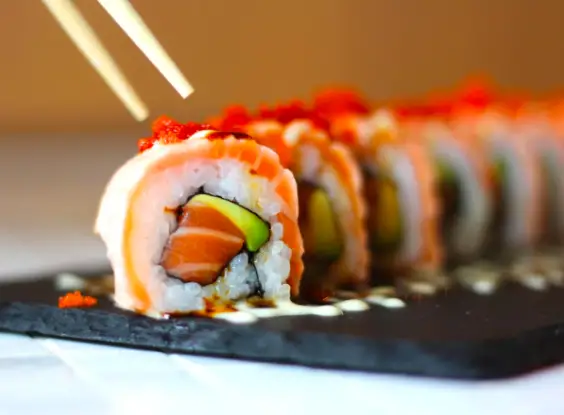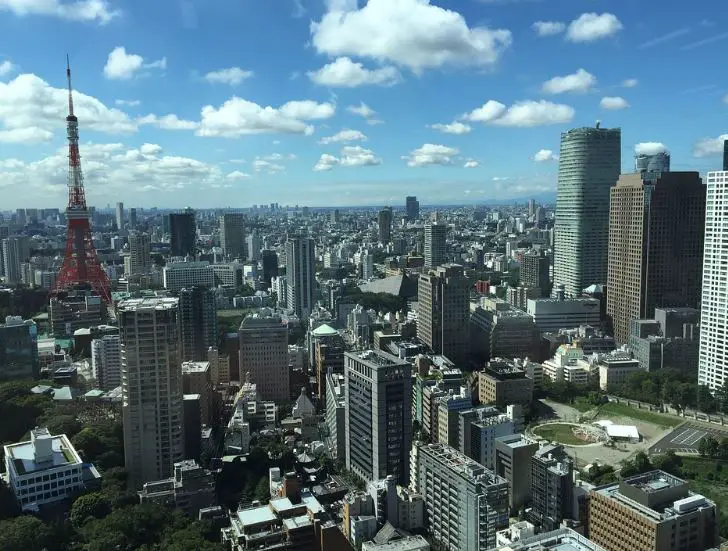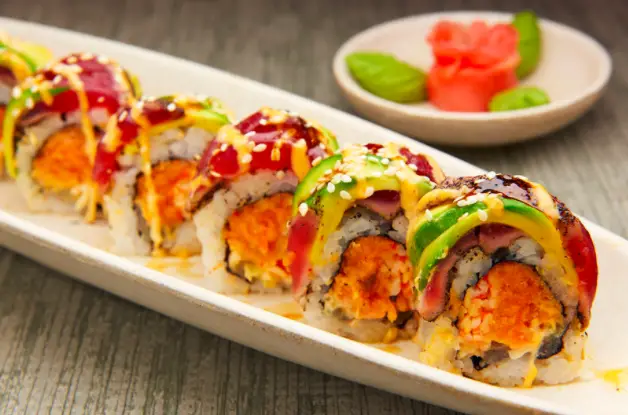Tokyo, Japan: Interesting Facts,History, Things to do,Why to Visit
Post ByAdequate Travel
Tokyo,Japan - the largest metropolitan area in the world. It is a place of exciting contrasts with a long history and a vibrant modern life. From ancient sights and temples to trendy urban areas and cutting-edge technology and architecture, Tokyo has something for everyone. To learn more about Tokyo – its rich history, interesting facts, things to do, and reasons to visit – keep reading to find out all the best that this exciting city has to offer.
Japan is an island country located in East Asia. It consists of four main islands, Honshu, Hokkaido, Kyushu, and Shikoku, as well as numerous smaller islands. With a population of approximately 126 million people, Japan is the 11th most populous country in the world.The country has a rich cultural heritage, famous for its traditional arts such as tea ceremonies, calligraphy, and flower arranging. It is also known for its anime, manga, and video game industries, which have gained global popularity.Japan has a highly developed and technologically advanced economy, with major industries including automotive manufacturing, electronics, and pharmaceuticals. Renowned Japanese companies like Toyota, Honda, Sony, Nintendo, and Canon have made significant contributions to global innovation.Japan is governed as a constitutional monarchy, with the Emperor serving as a symbolic figurehead. The country has a parliamentary system, with the Prime Minister as the head of government.However, Japan has faced various challenges in recent years. The country has a rapidly aging population and a low birth rate, which poses concerns for its future workforce and social security system. Additionally, Japan is prone to natural disasters, including earthquakes, tsunamis, and typhoons.Nonetheless, Japan remains a popular tourist destination, attracting millions of visitors each year. From its ancient temples and gardens to its modern cities and vibrant street culture, Japan offers a diverse range of experiences for travelers.Explore the popular places in japan, and immerse yourself in its vibrant culture.
Interesting facts
Japan's Cherry Blossom Festival
One interesting fact about Japan is its famous Cherry Blossom Festival. Every spring, cherry blossom trees (sakura) bloom across the country, creating a stunning display of pink and white flowers. This event is eagerly anticipated and celebrated by locals and tourists alike. People gather in parks, gardens, and along riverbanks to have picnics, admire the blossoms, and participate in traditional Japanese activities.
Examples:
- One of the most popular spots to enjoy the cherry blossoms is at Tokyo's Ueno Park, where large crowds gather to witness the spectacle.
- The festival often includes traditional Japanese performances such as tea ceremonies, kimono dressing, and music concerts.
- Cherry blossom-themed food and drinks, like sakura-flavored sweets and cherry blossom-infused beverages, are widely available during this time.
Mount Fuji: Japan's Iconic Mountain
Another fascinating aspect of Japan is its iconic mountain, Mount Fuji. Standing at 3,776 meters (12,389 feet) tall, it is not only Japan's highest peak but also a well-known symbol of the country. Mount Fuji is a popular destination for hikers and climbers, attracting thousands of adventurers each year.
Examples:
- Mount Fuji is a stratovolcano, and its distinct shape is often depicted in traditional Japanese art and literature.
- Every summer, numerous climbers attempt to hike to the summit to witness the breathtaking sunrise, known as "Goraiko," from the top.
- The mountain has been a pilgrimage site for centuries and holds spiritual significance in Japanese culture.
The Land of Advanced Technology
Japan is renowned for its advanced technological innovations, making it a global leader in various industries. The country is known for its cutting-edge electronics, robotics, and automotive manufacturing.
Examples:
- Japanese companies such as Sony, Toyota, and Panasonic are pioneers in developing innovative products and technologies.
- Japan is at the forefront of robotics, with its robots used in sectors such as healthcare, entertainment, and manufacturing.
- The country has a strong focus on research and development, leading to breakthroughs in fields like artificial intelligence and sustainable energy.
Introduction to Japanese History
Japan, an archipelago nation located in East Asia, has a rich and diverse history that spans thousands of years. From its early indigenous cultures to its modern status as a global economic powerhouse, Japan's history has shaped its unique cultural heritage and societal norms.
Ancient Japan
The history of Japan begins with the Jomon period (14,000-300 BCE), characterized by hunter-gatherer communities and the widespread use of pottery. Following the Jomon era, Japan entered the Yayoi period (300 BCE-300 CE), which marked the introduction of rice cultivation, metalworking skills, and the emergence of social hierarchies. The Kofun period (250-538 CE) witnessed the formation of centralized political power and the rise of ancient clans.
Feudal Japan
The Heian period (794-1185 CE) was an era of aristocratic dominance, marked by the rise of the imperial court and the flourishing of arts and culture. However, political power was gradually shifting to provincial military leaders known as samurais. The Kamakura period (1185-1333 CE) saw the emergence of a feudal military government, led by shoguns, and the samurai warriors played a crucial role in shaping the political landscape. This era is known for the Mongol invasions and the establishment of Zen Buddhism as a major religious influence.
Medieval and Early Modern Japan
The Muromachi period (1336-1573 CE) witnessed a time of political instability and frequent warfare among regional warlords. During this time, the samurais evolved into powerful daimyo, or warlords, who controlled their respective domains. The Azuchi-Momoyama period (1568-1600 CE) marked the reunification of Japan under the leadership of powerful warlords such as Oda Nobunaga and Toyotomi Hideyoshi.
The Edo period (1603-1868 CE) brought about the establishment of a centralized feudal government under the Tokugawa shogunate. This era was characterized by economic growth, strict social hierarchy, isolationist policies, and the development of traditional arts such as Kabuki theater and ukiyo-e woodblock prints.
Modern Japan
In the late 19th century, Japan embarked on a rapid modernization process known as the Meiji Restoration (1868-1912). The country opened up to Western influences, implemented democratic reforms, and rapidly industrialized. Japan's military played a significant role in territorial expansion, as seen in its victories in the Sino-Japanese War (1894-1895) and the Russo-Japanese War (1904-1905).
However, Japan's rapid militarization and imperial ambitions eventually led to its involvement in World War II, culminating in the devastating atomic bombings of Hiroshima and Nagasaki in 1945. Post-war Japan underwent a period of reconstruction and economic growth, transforming into a dominant player in global trade and technology.
Examples of Japanese Historical Significance
- The construction of ancient burial mounds called kofun, which are considered national treasures.
- The feudal system and the rise of samurai warriors, exemplified in famous figures like Minamoto no Yoshitsune and Takeda Shingen.
- The exquisite art and literature of the Heian period, including The Tale of Genji, one of the world's first novels.
- The tea ceremony and the philosophy of Zen Buddhism, which gained prominence during the Muromachi period.
- The influential woodblock prints of ukiyo-e artists like Hokusai and Hiroshige during the Edo period.
Famous Things of Japan
1. Mount Fuji
Mount Fuji, known as Fuji-san in Japanese, is an iconic symbol of Japan and one of the country's most famous landmarks. This active volcano stands at 3,776 meters tall and is revered for its elegant beauty. Visiting Mount Fuji is a popular activity for tourists, and many choose to climb to its summit during the summer months.
2. Tokyo Skytree
The Tokyo Skytree is a magnificent tower that dominates the city's skyline. Standing at a height of 634 meters, it is the tallest structure in Japan and one of the tallest towers in the world. It offers breathtaking panoramic views of Tokyo and its surroundings from its observation decks, making it a favorite attraction for visitors.
3. Kyoto's Temples and Shrines
Kyoto, the former capital of Japan, is renowned for its historic temples and shrines. The city is home to numerous UNESCO World Heritage Sites, including the iconic Kinkaku-ji (Golden Pavilion), Fushimi Inari Taisha Shrine with its thousands of vermilion Torii gates, and the beautiful Kiyomizu-dera Temple. Visitors to Kyoto can immerse themselves in the rich cultural heritage of Japan by exploring these sacred sites.
4. Himeji Castle
Himeji Castle, also known as the White Heron Castle, is considered one of Japan's finest feudal-era castles. This stunning example of traditional Japanese architecture is an UNESCO World Heritage Site and a national treasure. Its distinctive white appearance and intricate defensive features make it a must-visit destination for history and architecture enthusiasts.
5. Japanese Cuisine
Japanese cuisine is renowned worldwide and has left an indelible mark on the global culinary scene. From sushi and sashimi to ramen and tempura, Japan offers a wide range of delectable dishes. The attention to detail, fresh ingredients, and harmonious flavors make Japanese cuisine a truly unique experience. Visitors to Japan can enjoy these culinary delights in local eateries, street stalls, or high-end restaurants.
These are just a few examples of the famous things that Japan is known for. The country is rich in cultural heritage, natural beauty, technological advancements, and unique traditions. From its enchanting cherry blossoms to its bustling cities, there is something for everyone to discover and appreciate in Japan.Discover some unique facts about japan that will leave you amaze and intrigue.Culture of Japan
The culture of Japan is unique and intricately woven with deep-rooted traditions and customs. Here are some key aspects of Japanese culture:
1. Traditional Clothing (Kimono)
The traditional clothing of Japan is called the Kimono. It is a beautiful and elegant garment made of various materials like silk or cotton. Kimonos are worn on special occasions like weddings, festivals, or tea ceremonies. They are often adorned with intricate patterns and vibrant colors, symbolizing the rich cultural heritage of Japan.
2. Tea Ceremony (Chado)
Tea ceremony, also known as Chado, is a highly ritualistic and spiritual practice in Japan. It involves the preparation and serving of matcha (powdered green tea) to guests. The ceremony emphasizes harmony, respect, purity, and tranquility. It is often performed in traditional tea houses and is considered a symbol of Japanese hospitality.
3. Cherry Blossoms (Sakura)
Cherry blossoms, or sakura, are a significant cultural symbol in Japan. Every spring, the blooming of cherry blossoms is celebrated with great excitement and joy. Hanami, the act of viewing and appreciating cherry blossoms, is a cherished tradition in Japan. It represents the transient nature of life and reminds people to appreciate beauty in fleeting moments.
4. Cuisine (Washoku)
Japanese cuisine, known as washoku, is renowned globally for its exquisite flavors, meticulous preparation, and emphasis on fresh ingredients. Traditional Japanese dishes like sushi, sashimi, ramen, tempura, and miso soup have gained worldwide popularity. Washoku reflects the principles of balance, seasonality, and simplicity, making it not just a culinary delight but also a reflection of Japanese culture.
5. Anime and Manga
Anime and manga are prominent parts of Japanese popular culture that have gained immense global popularity. Anime refers to Japanese animated shows and movies, while manga refers to Japanese comics. They encompass various genres like fantasy, romance, action, and science fiction. Anime and manga are not only an art form but also showcase the creativity, storytelling, and unique aesthetics of Japanese culture.
6. Respect and Etiquette
Respect and etiquette play a vital role in Japanese culture. People in Japan emphasize politeness, humility, and deference towards others. Bowing is a common gesture used to show respect and gratitude. Additionally, removing shoes when entering homes or certain establishments, known as genkan, is a customary practice signifying cleanliness and respect for personal spaces.
These are just a few examples of the rich and diverse culture of Japan. The country's art, literature, architecture, music, and festivals also contribute to its cultural tapestry, making it a fascinating and enchanting destination for both locals and tourists.Immerse yourself in the local culture by exploring japan's top-rated tourist attractions.Cuisine of Japan
Japanese cuisine, also known as washoku, is renowned for its diverse flavors, refined presentation, and emphasis on seasonal ingredients. It is a combination of traditional cooking methods and ingredients while incorporating influences from other cultures. Here are some key aspects of Japanese cuisine:
Umami flavors
Japanese cuisine is famous for its umami flavors, which refers to the fifth taste alongside sweet, sour, salty, and bitter. Umami is often described as a savory or meaty taste that adds depth and richness to dishes. Examples of umami-rich ingredients used in Japanese cuisine include soy sauce, miso paste, bonito flakes, dried shiitake mushrooms, and seaweed.
Sushi and sashimi
Sushi and sashimi are globally recognized as iconic Japanese dishes. Sushi refers to vinegared rice combined with various ingredients such as raw or cooked fish, seafood, vegetables, or egg. Sashimi, on the other hand, consists of thinly sliced raw fish or seafood served without rice. These delicacies showcase the art of Japanese culinary skills and appreciation for freshness and simplicity.
Ramen
Ramen, a type of noodle soup dish, has gained worldwide popularity. It consists of Chinese-style wheat noodles served in a flavorful broth, often flavored with soy sauce, miso, or salt. Ramen can be enjoyed with various toppings such as sliced pork, bamboo shoots, seaweed, or a soft-boiled egg. Each region in Japan has its own unique style of ramen, creating a diverse range of flavors.
Tempura and Teppanyaki
Tempura is a dish where seafood or vegetables are lightly battered and deep-fried until crispy. It is often served with a dipping sauce and enjoyed as a snack or part of a larger meal. Teppanyaki, on the other hand, is a style of cooking where ingredients like meat, seafood, and vegetables are grilled on an iron griddle. The chef's lively performance and interaction with diners make teppanyaki a unique and entertaining dining experience.
Wagashi
Wagashi refers to traditional Japanese sweets typically enjoyed with tea. These desserts are often made with ingredients like mochi (sticky rice cake), anko (sweet red bean paste), matcha (powdered green tea), and seasonal fruits. Wagashi are known for their delicate presentation and subtle flavors, incorporating Japanese aesthetics into every bite.
Overall, Japanese cuisine offers a wide range of dishes and flavors that cater to diverse tastes and preferences. Each dish showcases a harmonious blend of flavors, textures, and presentation, making Japanese food a highly respected and beloved culinary tradition.Discover the untold stories behind japan unique facts, and historical treasures.Visit Tokyo
One of the top things to do in Japan is to visit its bustling capital city, Tokyo. Tokyo offers a wide range of attractions and activities for visitors to enjoy. Some must-see sights include:
The historic Meiji Shrine, surrounded by a peaceful forest
The bustling Shibuya Crossing, one of the busiest intersections in the world
The panoramic view from the Tokyo Skytree, one of the tallest towers in the world
Exploring the trendy neighborhoods of Harajuku and Akihabara
Shopping in the upscale district of Ginza
Visit Kyoto
Another must-visit destination in Japan is Kyoto, known for its traditional temples, gardens, and historical sites. Some highlights include:
The iconic Fushimi Inari Shrine with thousands of vibrant orange torii gates
The serene Zen gardens of Ryoanji Temple
The beautiful Kinkaku-ji Temple, also known as the Golden Pavilion
Exploring the historic Gion district, famous for its traditional tea houses and geisha culture
Taking a scenic boat ride along the Hozu River
Experience Japanese Cuisine
Japan is famous for its delicious and diverse cuisine. Some culinary experiences you shouldn't miss include:
Tasting sushi and sashimi at a local sushi bar or fish market, such as Tsukiji Market in Tokyo
Trying traditional kaiseki cuisine, which is a multi-course meal highlighting seasonal ingredients
Sampling different types of ramen noodles, such as tonkotsu, miso, or shoyu
Indulging in street food, such as takoyaki (octopus balls) or okonomiyaki (savory pancakes)
Enjoying a traditional tea ceremony and trying matcha green tea
Explore Japanese Gardens
Japan is known for its beautifully designed gardens, which offer a tranquil escape from the bustling cities. Some renowned gardens to visit include:
The stunning Kenroku-en Garden in Kanazawa, considered one of the three most beautiful gardens in Japan
The traditional landscape garden at Katsura Imperial Villa in Kyoto
The picturesque Ritsurin Garden in Takamatsu, featuring ponds, bridges, and teahouses
The peaceful Korakuen Garden in Okayama, known for its plum and cherry blossoms
Exploring the gardens of the Imperial Palace in Tokyo, which showcase traditional Japanese landscaping
Experience Traditional Japanese Arts
Japan has a rich cultural heritage, and there are various traditional arts to experience. Some popular ones include:
Attending a traditional Kabuki or Noh theater performance
Learning the art of origami and creating intricate paper sculptures
Watching a tea ceremony demonstration and learning about the art of making matcha
Visiting a traditional pottery studio and trying your hand at creating ceramic pieces
Exploring the world of Japanese calligraphy and trying to write characters using a brush and ink
Climate of Japan
Japan experiences a diverse climate due to its geographical location and topography. The country stretches over a long north-south axis, which contributes to variations in temperature and precipitation across different regions.
1. Hokkaido (Northern Japan)
Hokkaido has a humid continental climate, characterized by cold and snowy winters. The average temperatures range from 20°F (-6°C) in January to 75°F (24°C) in July. The region receives heavy snowfall in winter, making it popular for winter sports.
2. Tohoku (Northeastern Japan)
Tohoku experiences a humid continental climate with cooler summers and colder winters compared to other parts of Japan. The average temperatures in January range from 28°F (-2°C) to 82°F (28°C) in July. The region is known for its beautiful cherry blossoms in spring.
3. Kanto (Eastern Japan, including Tokyo)
Kanto has a humid subtropical climate, characterized by hot, humid summers and mild winters. The average temperatures range from 36°F (2°C) in January to 86°F (30°C) in July. Tokyo, located in this region, showcases the contrast between traditional and modern Japan.
4. Chubu (Central Japan)
Chubu experiences a humid subtropical climate in coastal areas, while its mountainous regions have a humid continental climate. This region is home to popular tourist destinations like Mount Fuji and offers diverse landscapes. The average temperatures range from 30°F (-1°C) in January to 82°F (27°C) in July.
5. Kansai (Western Japan, including Kyoto and Osaka)
Kansai has a humid subtropical climate, similar to the Kanto region, but with slightly milder winters. The average temperatures range from 38°F (3°C) in January to 86°F (30°C) in July. The region is famous for its historical landmarks, traditional architecture, and culinary delights.
6. Chugoku (Western Japan, including Hiroshima)
Chugoku experiences a humid subtropical climate with relatively mild winters. The average temperatures range from 41°F (5°C) in January to 84°F (29°C) in July. Hiroshima, located in this region, holds historical significance due to its tragic past and serves as a reminder of the importance of peace.
7. Shikoku (Southwestern Japan)
Shikoku has a humid subtropical climate, with mild winters and hot, humid summers. The average temperatures range from 46°F (8°C) in January to 88°F (31°C) in July. This island is known for its beautiful nature, traditional pilgrimage route, and tranquil atmosphere.
8. Kyushu (Southern Japan)
Kyushu experiences a humid subtropical climate, similar to Shikoku, with slightly milder winters. The average temperatures range from 48°F (9°C) in January to 87°F (31°C) in July. The region showcases a rich blend of history, culture, and volcanic landscapes.
9. Okinawa (Southernmost part of Japan)
Okinawa has a humid subtropical climate with mild winters and hot, humid summers. The average temperatures range from 61°F (16°C) in January to 88°F (31°C) in July. The region is famous for its stunning beaches, coral reefs, and distinct Ryukyuan culture.
In summary, Japan's climate varies from colder regions in the north with heavy snowfall to milder and humid areas in the south. Each region offers unique natural beauty, historical landmarks, and cultural experiences, attracting tourists from all over the world.Discover the untold stories behind japan unique facts, and historical treasures.Popular activities in Japan
Japan offers a wide range of popular activities that showcase its rich culture, history, and natural beauty. Here are some examples:
1. Cherry Blossom Viewing (Hanami)
One of the most beloved traditions in Japan is the Hanami, which refers to cherry blossom viewing. During the spring season, parks and gardens across the country burst into a riot of pink and white blooms. People gather with family and friends to have picnics under the cherry trees, enjoying the beauty of the blossoms and celebrating nature's renewal.
2. Sumo Wrestling
Sumo is Japan's national sport and holds a significant cultural and historical importance. Watching a sumo wrestling match is a unique and thrilling experience. These grand tournaments take place six times a year, and spectators can witness the intense ritualistic performances of sumo wrestlers as they compete to push each other out of a circular ring.
3. Tea Ceremony
The Japanese tea ceremony, known as "chado" or "sado," is a traditional ritual that involves the preparation and serving of powdered green tea, called matcha, in an aesthetically pleasing manner. Participants experience tranquility and mindfulness while they observe the intricate and graceful movements performed by a tea master. This ceremony represents harmony, respect, purity, and tranquility.
4. Hot Springs (Onsen)
Japan is renowned for its natural hot springs, known as "onsen." These geothermally heated baths provide a soothing and relaxing experience. The mineral-rich waters are believed to have various health benefits. Visitors can choose from a wide range of onsen, from remote mountain retreats to luxurious urban spas.
5. Samurai Experience
An excellent way to delve into Japan's samurai heritage is by participating in a samurai experience. Tourists can dress up in traditional samurai attire, learn about samurai history, participate in sword-fighting demonstrations, and even try their hand at samurai techniques.
6. Temples and Shrines
Japan is home to countless temples and shrines that reflect its profound spiritual and religious aspects. Visitors can explore ancient structures such as Kyoto's Kiyomizu-dera or Tokyo's Sensō-ji, immersing themselves in a serene and peaceful atmosphere. Many temples and shrines also hold traditional ceremonies and festivals throughout the year, creating a unique cultural experience.
Overall, these activities offer a glimpse into the rich heritage and traditions of Japan, allowing visitors to deepen their understanding of the country's culture and enjoy memorable experiences.Plan your trip with a list of the best things to do in japan, catering to all interests.Night Life in Japan
Japan offers a vibrant and diverse nightlife scene, with various options to suit different interests and preferences. Here are some key aspects of Japan's nightlife:
1. Entertainment Districts
Japan has several entertainment districts known for their bustling nightlife. Two of the most famous districts are Shinjuku in Tokyo and Dotonbori in Osaka. In Shinjuku, you can find numerous bars, clubs, and karaoke establishments where you can enjoy music and drinks. Dotonbori, on the other hand, is known for its lively street food stalls, neon lights, and vibrant atmosphere.
2. Izakayas
Izakayas are traditional Japanese pubs where people gather to enjoy drinks, snacks, and socialize. These establishments offer a relaxed and comfortable environment, making them popular among locals and tourists alike. Izakayas often serve a wide range of alcoholic beverages, including sake and local beers, along with delicious small plates of food.
3. Karaoke
Karaoke is a major part of Japanese nightlife culture. It allows you to rent a private room with friends and sing your favorite songs. Japan is home to countless karaoke establishments, ranging from small cozy rooms to large multi-story complexes. Singing karaoke is a fun and popular way to let loose and enjoy the night with friends.
4. Nightclubs
Japan boasts a thriving nightclub scene, particularly in cities like Tokyo and Osaka. Nightclubs feature top-notch sound systems, impressive light displays, and renowned DJs, attracting both locals and international visitors. You can dance the night away to various music genres, from electronic to hip-hop, in these lively venues.
5. Capsule Hotels
Capsule hotels are a unique accommodation option in Japan, and some also offer an exciting nightlife experience. These hotels consist of small, individual sleeping capsules stacked vertically within a larger shared space. Some capsule hotels have communal areas where guests can socialize, relax, and enjoy drinks. It's an excellent way to meet new people and experience an alternative side of Japanese nightlife.
Overall, Japan's nightlife offers a diverse range of options, from bustling entertainment districts to traditional izakayas and high-energy nightclubs. Whether you prefer singing karaoke, exploring vibrant streets, or enjoying a few drinks in a cozy izakaya, Japan has something to offer for every night owl.Step back in time as you visit the historical sites in japan, where the past comes alive.Reasons to Visit Japan
Japan is a fascinating country with a rich cultural heritage, stunning natural landscapes, and a unique blend of ancient traditions and modern technology. There are numerous reasons why Japan should be on your travel bucket list:
1. Rich Cultural Heritage
Japan has a deep-rooted cultural heritage, which can be explored through its temples, shrines, traditional arts, and festivals. Kyoto, for example, is home to numerous UNESCO World Heritage sites, including the famous Kinkaku-ji (Golden Pavilion) and Fushimi Inari Shrine.
2. Delicious Cuisine
Japanese cuisine is known for its meticulous preparation, fresh ingredients, and exquisite presentation. From sushi to ramen, tempura to yakitori, Japan offers a wide array of mouthwatering dishes. Don't miss the chance to try authentic sushi at the renowned Tsukiji Fish Market in Tokyo.
3. Beautiful Landscapes
Japan boasts diverse and stunning landscapes, ranging from lush mountains to serene gardens, and picturesque coastlines to hot springs. Mount Fuji, the iconic symbol of Japan, offers breathtaking views and is a popular destination for hiking enthusiasts.
4. Technological Advancements
Japan is known for its cutting-edge technology and futuristic advancements. Tokyo, the capital city, is a hub of innovation and features attractions like the Robot Restaurant and Odaiba, a man-made island showcasing futuristic architecture.
5. Relaxing Onsen Experience
Onsens, or traditional Japanese hot springs, are a favorite pastime for many locals and tourists. These natural hot springs offer relaxation, rejuvenation, and a glimpse into Japanese bathing culture. Be sure to visit the town of Hakone, renowned for its scenic beauty and abundance of onsens.
6. Unique Traditional Arts
Traditional arts and crafts such as origami, tea ceremony, calligraphy, and Ikebana (flower arrangement) have deep cultural significance in Japan. Kyoto's Gion district is well-known for geisha culture, where you can witness traditional performances and glimpse the beauty of Japanese arts.
7. Cherry Blossom Season
During spring, Japan's cherry blossom season transforms the country into a mesmerizing pink wonderland. Famous spots like Tokyo's Ueno Park and Kyoto's Philosopher's Path are renowned for their cherry blossom viewing parties, known as hanami.
8. Efficient Public Transportation
Japan prides itself on its punctual and efficient transportation system, making it easy to explore cities and regions. The Shinkansen (bullet train) is a marvel of engineering and offers a comfortable and speedy way to travel between major cities like Tokyo, Osaka, and Hiroshima.
9. Fashion and Shopping
Japan is a fashion-forward country, renowned for its unique street fashion and luxury brands. Cities like Tokyo and Osaka are paradise for fashion enthusiasts, with districts such as Harajuku and Shibuya offering a wide range of trendy boutiques, department stores, and specialty shops.
10. Hospitality and Etiquette
Japanese people are known for their warm hospitality and exceptional etiquette. Visitors often admire the respectful and polite nature of the locals, making their stay in Japan a pleasant and memorable experience.
Whether you're a history buff or an adventure seeker, japan has an attraction for you. So, don't miss the chance to visit popular places in japanNumber of Days Required to Visit Japan
Visiting Japan can be a truly memorable experience due to its rich culture, stunning landscapes, and technological innovations. The number of days required to explore Japan will vary depending on individual preferences, the destinations you plan to visit, and the amount of time you have available. However, here are some general guidelines to consider:
1. Tokyo:
As the capital city of Japan, Tokyo offers a myriad of attractions, including iconic landmarks, vibrant neighborhoods, and a bustling nightlife. To fully immerse yourself in the city's vibrant atmosphere and explore major sites such as Tokyo Disneyland, the Senso-ji Temple, and the Tsukiji Fish Market, it is recommended to allocate at least 3 to 4 days.
2. Kyoto:
Known for its traditional temples, picturesque gardens, and historical structures, Kyoto should ideally be visited for a minimum of 3 to 4 days. This will allow you to visit popular sites like the Fushimi Inari Shrine, Kinkaku-ji Temple, and the Arashiyama Bamboo Grove, while also experiencing traditional tea ceremonies and exploring the city's charming geisha district.
3. Osaka:
Osaka is famous for its delicious street food, modern architecture, and vibrant nightlife. While you can visit Osaka in just a day or two, it is recommended to spend at least 2 to 3 days to fully experience the city's culinary delights, visit the iconic Osaka Castle, and explore popular attractions such as Universal Studios Japan and Dotonbori Street.
4. Hiroshima:
Hiroshima is historically significant and well-known for its Peace Memorial Park, which commemorates the atomic bombing during World War II. To visit Hiroshima and also explore the nearby island of Miyajima with its famous floating torii gate, allocating 2 to 3 days will allow you to fully appreciate the historical importance of the region.
5. Other Destinations:
Japan offers numerous other destinations worth visiting, including Nara, Himeji, Kanazawa, and Sapporo. Each of these destinations has its own unique attractions, and the number of days required to visit them will depend on your personal interests and available time.
Overall, a trip to Japan can range anywhere from 7 to 14 days or even more, depending on your preferences and the locations you wish to explore. It is important to plan your itinerary carefully to ensure you have enough time to fully appreciate the beauty and cultural wealth that Japan has to offer.
Uncover the best japan attractions that will leave you awe-inspired and wanting more.Significance of Japan
Japan holds immense significance in various aspects, ranging from its rich cultural heritage and technological advancements to its economic prowess and global influence. Here are some key points highlighting the significance of Japan:Cultural Heritage
- Japan's history, traditions, and customs have left a profound impact on global culture. The country is renowned for its unique art forms such as Kabuki theater, tea ceremonies, origami, and exquisite craftsmanship.
- Japanese cuisine, including sushi, ramen, and tempura, has gained popularity worldwide and is appreciated for its artistic presentation and meticulous preparation.
- The influence of Japanese anime and manga has spread globally, with devoted fan bases and enthusiasts appreciating the distinctive art styles and storytelling techniques.
Technological Advancements
- Japan is at the forefront of technological innovations, particularly in the fields of robotics, electronics, and transportation. Examples include the advanced humanoid robot Asimo developed by Honda and the bullet train (Shinkansen) known for its high speed and efficiency.
- Japanese companies such as Sony, Nintendo, and Toyota have pioneered groundbreaking technologies and products, impacting various industries worldwide.
- The country's advancements in robotics have also contributed to various sectors, including healthcare and manufacturing.
Economic Powerhouse
- Japan has one of the largest economies globally, known for its strong industrial base, innovative manufacturing practices, and global trade ties.
- Japanese companies are leaders in automobile manufacturing, electronic goods, and machinery, contributing significantly to global exports.
- The Tokyo Stock Exchange is a major global market, reflecting Japan's significance as a financial hub.
Global Influence
- Japan's diplomatic relations and engagement in international affairs have positioned it as a prominent player on the global stage.
- The country contributes significantly to international peacekeeping efforts and plays a crucial role in organizations such as the United Nations.
- Japan's soft power, exemplified by cultural exports like anime, has helped foster positive international perceptions of the country and its people.
In conclusion, Japan's significance is multifaceted, encompassing its rich cultural heritage, technological advancements, economic influence, and global engagement. These aspects have made Japan a respected nation with a strong global presence.From hidden gems to iconic landmarks, japan has something for every traveler's taste.FAQ'S of Japan
1. What is the currency of Japan?
The currency of Japan is the Japanese Yen (JPY). It is represented by the symbol "¥". The monetary system in Japan is based on the decimal system, with yen being the main unit of currency. The yen is further divided into smaller units called sen and rin, although these are rarely used today.
Example: 100 yen is commonly denoted as ¥100.
2. What is the official language of Japan?
The official language of Japan is Japanese. It is spoken by the majority of the population in Japan. Japanese is a unique language with its own writing system that includes a combination of three scripts: hiragana, katakana, and kanji. Kanji is derived from Chinese characters and is used for more complex concepts and words.
Example: こんにちは (Konnichiwa) means "Hello" in Japanese.
3. What is the transportation system like in Japan?
Japan has an extensive and efficient transportation system that includes trains, buses, and subways. The train system, in particular, is known for its punctuality and speed. The Shinkansen (bullet train) is a popular mode of transportation for long-distance travel between major cities in Japan.
Example: The Tokyo Metro subway system is widely used by commuters for navigating within Tokyo.
4. What are some popular tourist attractions in Japan?
Japan offers a wide range of tourist attractions, both historic and modern. Some popular attractions include:
- The historic city of Kyoto, known for its temples, shrines, and traditional gardens.
- The bustling city of Tokyo, with its modern architecture, shopping districts, and cultural sites like the Tokyo Tower.
- The iconic Mount Fuji, a sacred mountain and a UNESCO World Heritage site.
- The historic Hiroshima Peace Memorial Park, dedicated to the victims of the atomic bombing in 1945.
5. What is the best time to visit Japan?
The best time to visit Japan depends on personal preferences and the desired experiences. The spring season (March to May) is known for beautiful cherry blossoms, while autumn (September to November) offers vibrant foliage. Summers can be hot and humid, but it is a great time to experience festivals. Winter is popular for skiing and enjoying hot springs.
Example: The famous cherry blossoms typically bloom in late March to early April.
6. Is it necessary to learn Japanese before visiting Japan?
While it is not necessary to learn Japanese before visiting Japan, knowing a few basic phrases can greatly enhance your travel experience. Most major tourist destinations have signage in English and public transportation announcements are often made in both Japanese and English. However, learning basic greetings and phrases can help in interactions with locals and add to cultural understanding.
Example: ありがとう (Arigatou) means "Thank you" in Japanese.
Step back in time as you visit the historical sites in japan, where the past comes alive.







